VIBES are an awesome addition to any tackle box.
They come in various sizes, are quite heavy in terms of weight to size ratio, cast well even when using very small versions, sink fast and have a really tight action that could only be like a speaker phone to a fish’s lateral line. Basic vibes off the shelf do have some negatives, such as their ability to snag anything they touch and the fact they don’t work so well when species including bass and perch have shut down and just want to pick at your offerings.
You can buy very expensive hybrid vibes that have a stinger hook arrangement fitted to them straight out of the box, but if you can’t afford to spend $20-$30 on such lures, or more to the point can’t afford to lose such lures, then perhaps modifying existing non-performing or cheaper vibes is an option. The main benefits of stingers are they are less likely to snag up and they can be jigged with long pauses on the bottom when fish are picky, thus allowing the fish to pick at the little stingers that may look like little shrimp or yabby claws.
A benefit of making your own stingers is the fact you can recycle old vibes or buy cheaper vibes that don’t make you cry when they are lost to a snag.
To get started you will need basic tools and supplies including:
- Cheap, damaged or non-performing vibes;
- Single lure hooks. Size depends on lure size but I use between size 10 for 3g vibes and size 4 for 12g vibes;
- Spinnerbait skirting to dress up one of your hooks. You can buy this or tax some off one of your spinnerbaits. You only need two strands of about 50mm in length;
- Small glow beads (optional);
- Round clips (optional) in case the existing ones on your lures are not trustworthy;
- 25lb braid, preferably coloured, and 4lb braid, preferably in a neutral colour;
- Braid scissors, preferably with split ring tool; and
- Loctite 406 super glue (optional). Because everything is so small and fiddly it’s hard to ensure great knots, so super glue provides insurance and 406 is a flexible super glue. I also use this on my knots with heavy gear.
Step one
Remove any trebles. If the lure has forward hooks, remove them because nothing will be fitted to this attachment point. Don’t be tempted to either, as doing so will result in tangles when fishing. I prefer to fit my stingers to the split ring, so I generally leave or replace the rear split ring.
Step two
Select your hook and skirting material, thread two pieces of 50mm-long skirting through the eye of the hook and fold back even lengths away from the eye. Using the 4lb braid, tie a snell knot to secure the skirting material to the hook. Trim the tags and skirting to the desired length.
Step three
Tie the dressed hook to the 25lb braid using a clinch knot. If using beads, fit one or two beads before tying the blank hook to the other end. You are aiming for the hook eyes to be 35-40mm apart because any less is too difficult to work with and any more than 50mm may lead to fewer hook-ups. At this point I normally glue all three knots and begin making another rig while the glue dries.
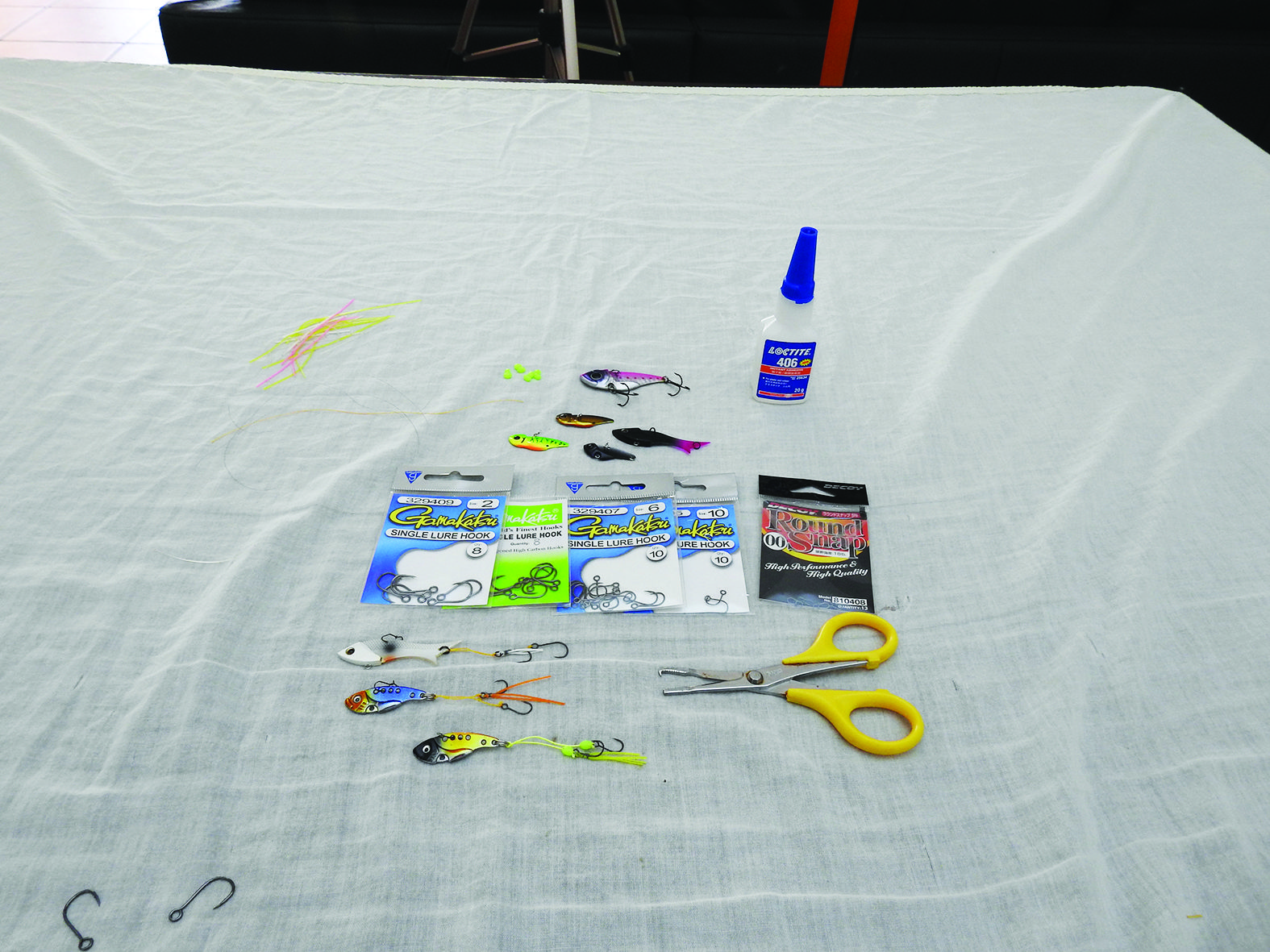
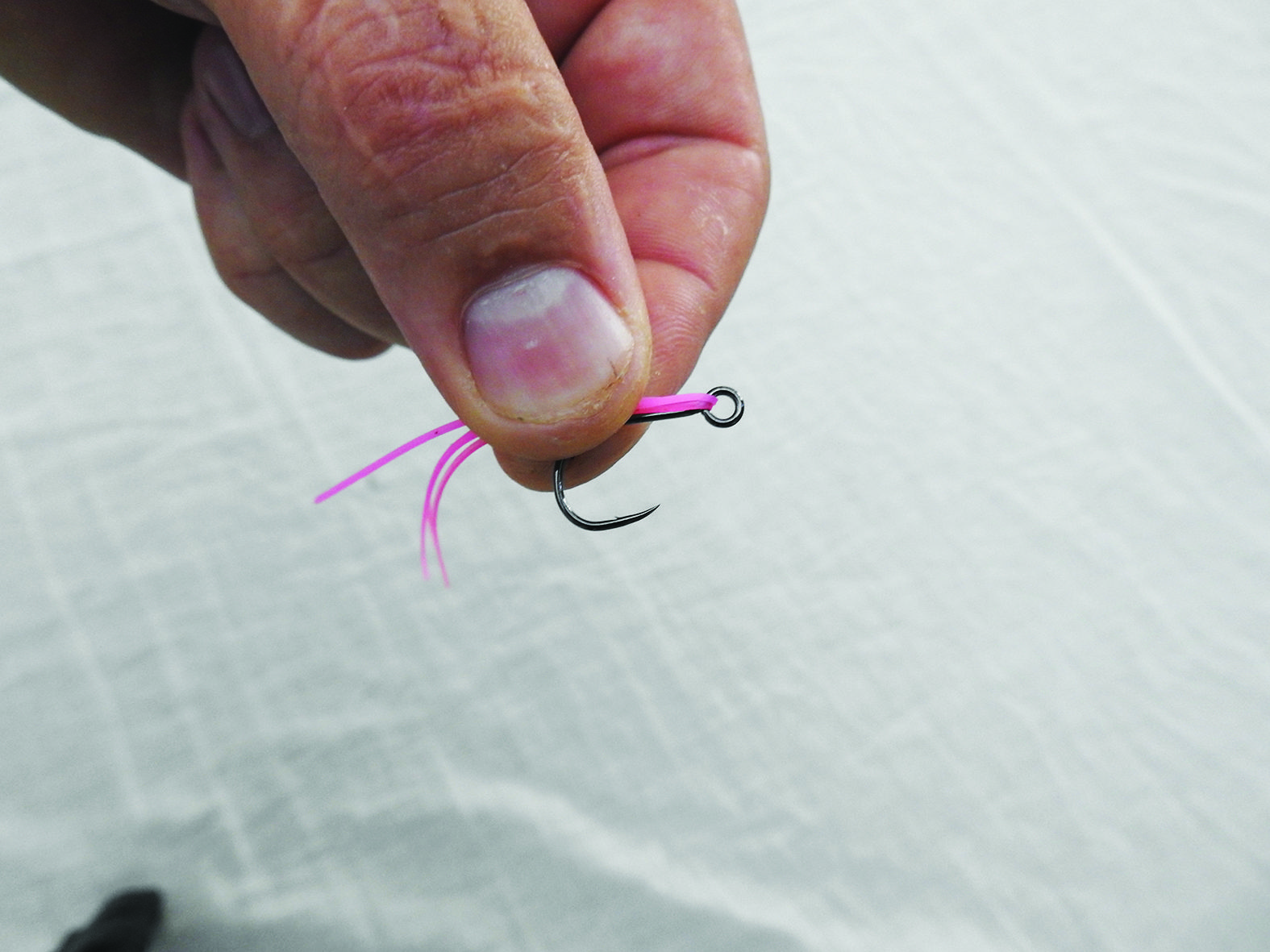
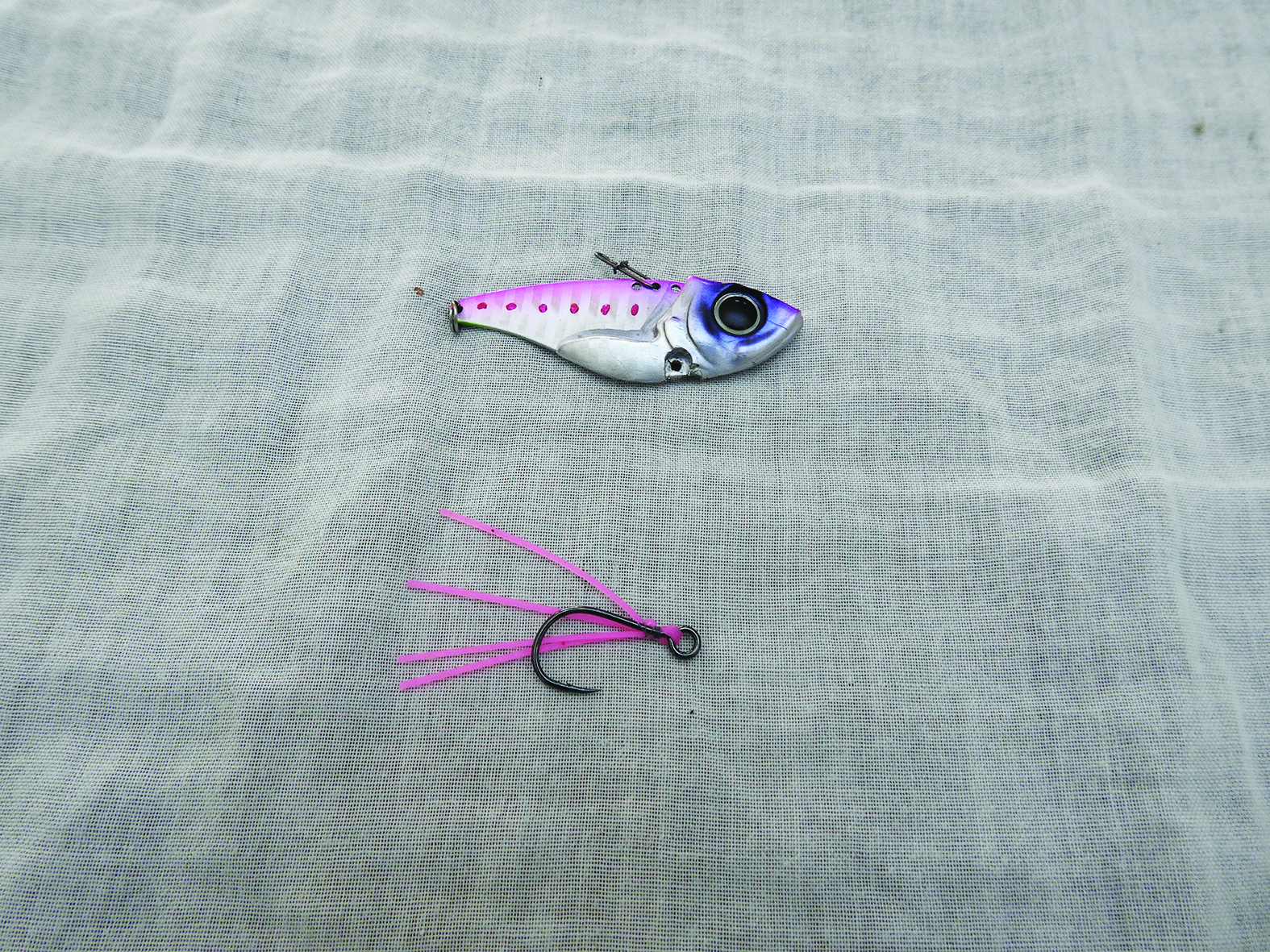
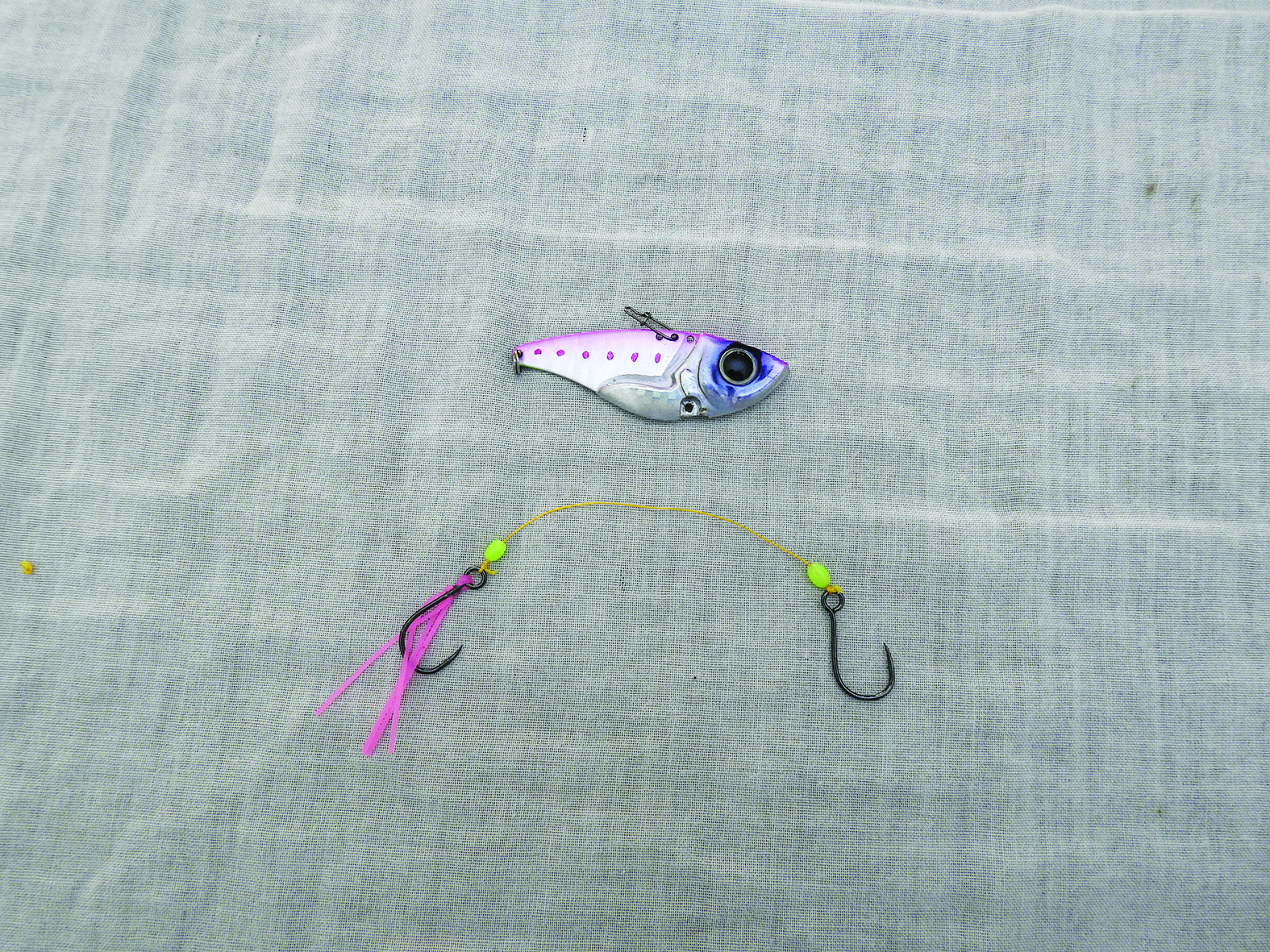
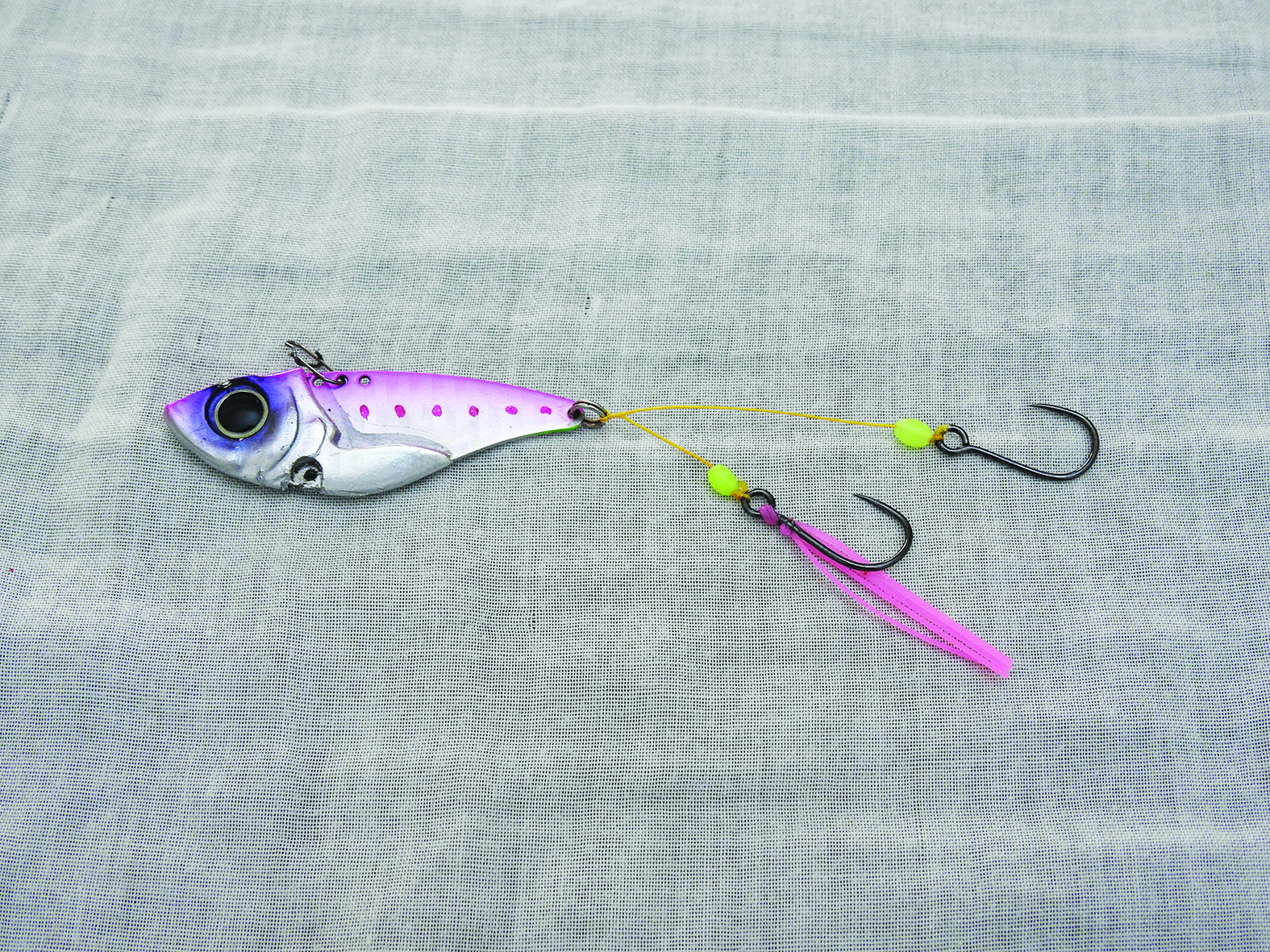
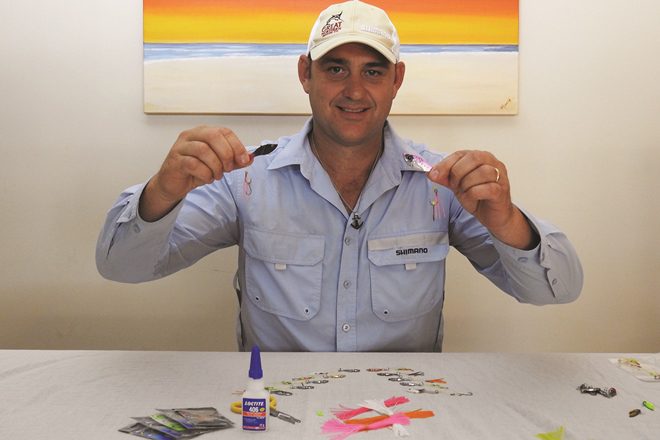
Position the two hooks together and feed the loop through the split ring or tow point and then feed the hooks and beads back through the loop formed. Before tightening, adjust the rig so the hooks are offset, with the dressed hook above the plain hook and the plain hook partially hiding in the skirting of the dressed hook.
And that’s it! You’re now ready to go fishing with your new and improved vibe.
A deadly technique I have used recently is known as the shake and bake. I didn’t invent this technique but read of it somewhere. Basically you cast your vibe and allow it to sink to the bottom. Once on the bottom I let it sit for a bit or burn it quickly and then sit. After about 20 seconds I shake the rod tip as quickly as I can for about five seconds (the shake) and then let the lure sit for about 20 seconds (the bake). Repeat this with a few burns mixed in and that’s it. Often when perch and bass are shut down or really picky they can’t help but nip at the little stingers, resulting in a hook-up.
Good luck folks.
If you would like to see the YouTube version of this tutorial, you can find a link on my blog at freefishinggear.com.au
 Bush ‘n Beach Fishing Magazine Location reports & tips for fishing, boating, camping, kayaking, 4WDing in Queensland and Northern NSW
Bush ‘n Beach Fishing Magazine Location reports & tips for fishing, boating, camping, kayaking, 4WDing in Queensland and Northern NSW









